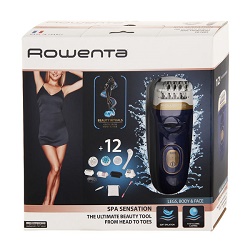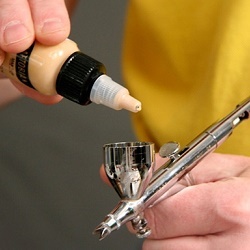Self repair hair straightener
Before you disassemble the hair straightener, you must carefully weigh your options. Despite the seeming simplicity of the device, this operation can lead to complete unsuitability of the curling iron for further operation. To produce repairs rectifier designed for hair styling, you must be able to use a screwdriver and side cutters, have your soldering iron and tester. Good knowledge in radio engineering and plumbing.
Content
Device and principle of operation of the device
Hair straightener is a heating device. in the form of a clip, allowing to straighten stubborn curls. Alignment provides a temperature of 120º to 210ºC, which is formed between two, tightly fitting, smooth plates.They press hair strands under the influence of the spring.
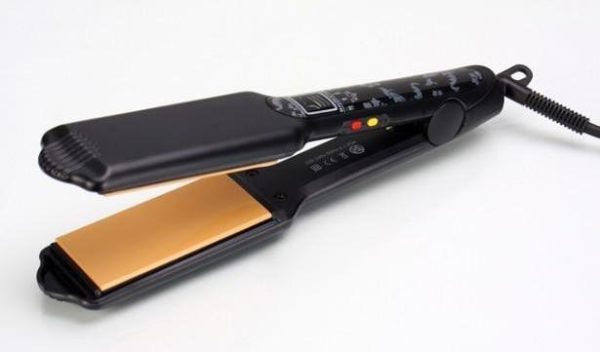
Despite the large variety of brands and models of pleyos, they are mostly similar in layout. The hair straightener circuit includes:
- Body in the form of tongs with power cord.
- Heating elements (teny)
- Temperature regulator.
Unfortunately, the simplicity of the device design does not lead to its reliability. Even models of famous manufacturers often fail. Self repair of a hair straightener can save money and time spent on a trip to the workshop.
Self troubleshooting
Failure of a hair straightener may result in partial or complete loss of heat or in mechanical failure. Before disassembling the iron, it should be carefully examined for integrity.
The most common ailment of these devices is a broken power cord. In models with a detachable wire, the fault lies in the poor contact of the connector.
Disassembly begins with the separation of the halves of the iron. To do this, remove the decorative plugs on the sides of the fixture, and unscrew the tightening screw.

Attention: This operation must be carried out carefully, as there is a spring on the axis connecting the parts of the curling iron. Before removing, you need to note its exact location, so as not to waste time and nerves during assembly.
When the halves are uncoupled, access to the other screws securing the covers, which cover the heaters and controls, will open. Having access to the temperature regulator, you can proceed to inspect and dial the details.
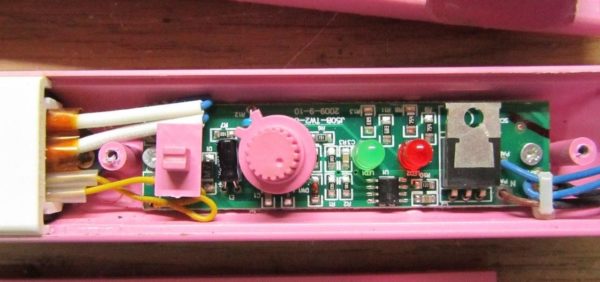
Possible failures and solutions
- No power on temperature controller board - defective cord. It is necessary to examine it, check the soldering to the board. When a break is detected, the damaged part is cut off and the cable is soldered in place. A faulty connector is not easily repaired, so you can simply exclude it from the circuit and solder the cord directly.
- Only one half of the forceps works - tena breakage or poor soldering. Eliminated by disassembling the heating element. It represents two plates, between which there is a resistor. When disassembling, special attention should be paid to the conducting layer in order not to erase it accidentally. Troubleshooting is to ensure contact between the wire and the tena plate.
- Power to the board comes in, but hair iron not heated - poor soldering, burnout of one of the parts. Examines the board. If there are no visible defects, all the elements are consecutively called, starting with the fuse. The quenching resistor and diodes fly out most often. Particular attention should be paid to the capacitor and the variable resistor (if it is provided schematically).
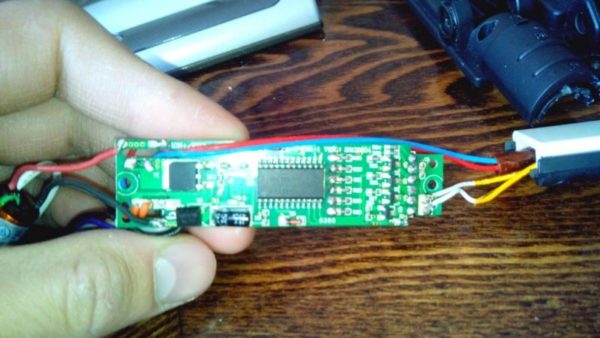
As you can see, repairing hair ironing is quite possible to do it yourself. However, we should not forget about the electrical safety rules and restore the device only in a disconnected form.

/rating_on.png)
/rating_off.png)






